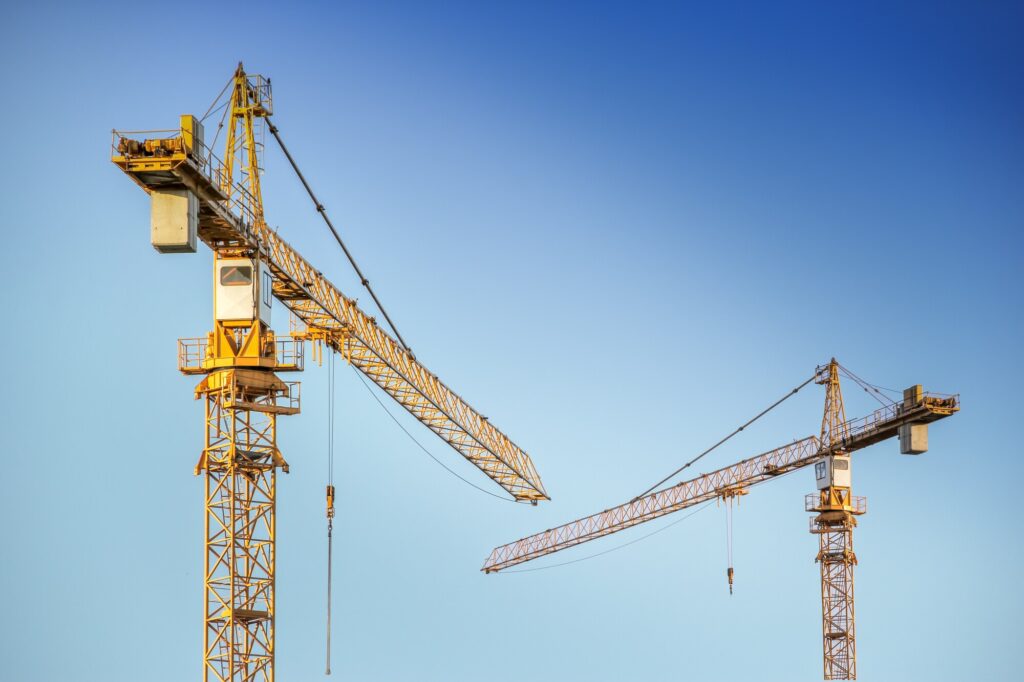
5 Types of Industrial Cranes
Table of Contents
It doesn’t matter who you are, there’s nothing more satisfying than watching everything fall into place. And if we’re taking that phrase at face value, cranes are a must-have in large industrial construction and repair projects.
Like other rhyming engineering marvels such as trains and planes, many are fascinated by cranes and how they are able to counterbalance without tipping over. Or maybe you’re still in awe at the famous photograph of the crane workers in New York.
So here’s a guide to 5 types of industrial cranes and their use cases to help you better understand these engineering masterpieces.
1. Mobile Crane
A mobile crane is a common crane used in industry. Often its own vehicle, the mobility allows for transfer across a large site such as a quarry with relative ease. Most often they come on wheels or tracks.
A crawler crane is an example of a tracked crane. The crawler’s tracks limit its turning capacity, but they allow the crawler to move on soft ground or unimproved sites without sinking.
The telescopic arm attached to some crawler cranes allows them to change their size, allowing them to safely traverse a wide range of terrain. Because of their bulkiness, special setup, and need to be transported from site to site, crawlers are well-suited to long-term projects.
2. Floating Crane
This floating crane is also called a crane boat or crane ship and found at sea for projects such as oil rigs or ports. With technological advancements over time, floating cranes have helped generations of people work at sea, in particular in industries such as oil and fishing.
In addition to floating cranes, there are also various types of semi-submersible cranes and sheerleg cranes. Nonetheless, floating cranes differ only in that they’re used on the water instead of on land.
3. Jib Crane
A jib crane lifts loads at different angles. It’s one of the most recognizable types of cranes, often used in the military and industry.
These cranes are ideal for lifting loads at an angle from horizontal to vertical thanks to their arm, called a jib. They load and unload materials at a wide variety of locations, including docks, assembly lines, work platforms, and driveways.
4. Gantry Crane
A gantry crane is a crane supported by two or more beams (girders) that are fixed on an elevated structure. It has the ability to move in any direction without any requirement for additional support or foundation.
These cranes are used to lift and place heavy materials and lift, shift or move loads at the same level, often found in shipyards or large-scale builds.
5. Bridge Crane
A bridge crane is a type of overhead crane that hoists and drops loads using a wire rope attached to the load. These cranes come in two designs: single girder and double girder. You can find more about these at shannahancrane.com.
The single girder is best for loading and unloading trucks, while the double girder is popular with manufacturers who need to carry out assembly tasks using longer spans.
These are similar to gantry cranes, but where gantry cranes attach to the legs, a bridge crane attaches to rollers or the building structure to allow a more custom route around the building.
Industrial Cranes Are Awe-Inspiring
Cranes come in all shapes and sizes, most often determined by their use cases.
So if you’re ever in need of hiring industrial cranes, it’s vital to understand which is the most suitable for your particular use case. In these cases, it might be worth outsourcing and getting advice from an expert who can do all the heavy lifting for you!
Now you’re all clued up on cranes, click for more articles to see what else you can learn!

